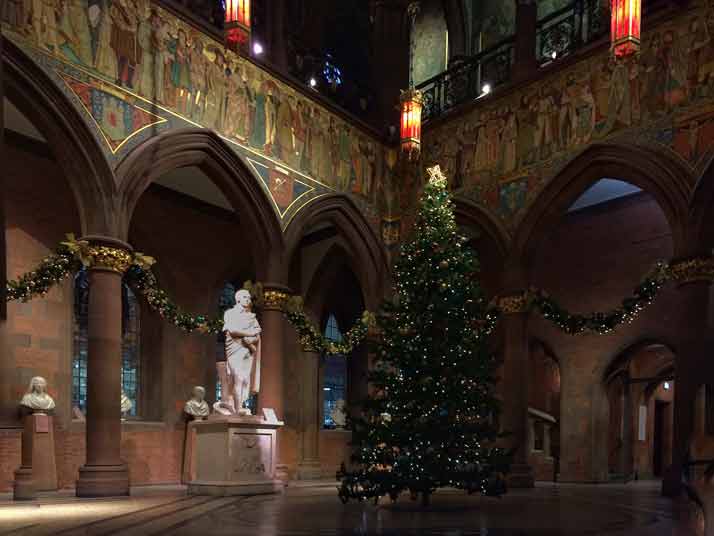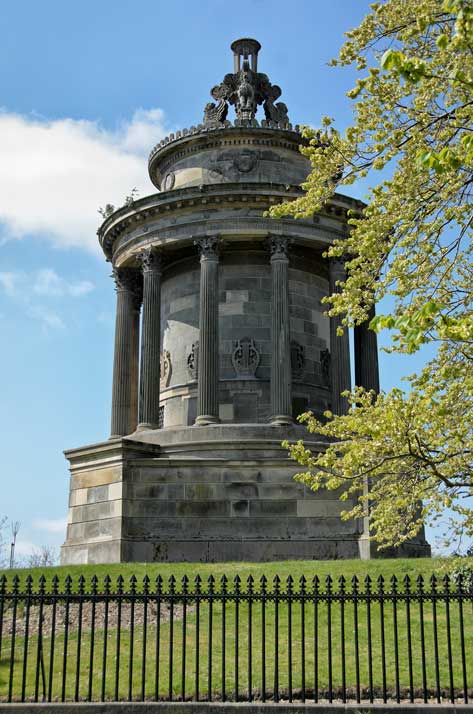
Burns: The Words
You may think you don’t know any poetry by Robert Burns– but you do!
Ever linked arms and sung Auld Lang Syne? Or remarked that “the best laid plans of mice and men go oft astray?” Or hummed the song “Coming thro ugh the rye”? You may be surprised that they are all works by Robert Burns, Scotland’s national poet.
ugh the rye”? You may be surprised that they are all works by Robert Burns, Scotland’s national poet.
The Man
Burns was a ploughman, born and raised in Ayrshire to tenant farmers. His parents paid for a decent basic education, and he continued to study on his own. His poetry was very much in tune with the literary tastes of the time: he was just ahead of the countryside loving Romantics (Shelley, Wordsworth, Coleridge). Thus the general public loved his use of his country experiences to reflect on universal considerations. Although he was very adept at writing in English Burns chose to write in Scots language or dialect. Many readers feel that the lilt and language add beauty and atmosphere to his work.
When he moved to Edinburgh in 1786 (on a borrowed pony!) the Scottish enlightenment was in full swing. So it was that young Burns found himself amongst some learned men – metaphysicians, philosophers and Earls! The egalitarian poet must have been happy with the set-up in Edinburgh Old Town, where all levels of society lived side-by-side. However, he was also a womaniser and heavy drinker, and he soon spent the fortune he made through his poetry. Consequently, he took a job as an Exciseman (tax collector) in Dumfries – not something that particularly suited to his personality, rockstar lifestyle (whisky, women and song!) or his social views. But he continued to write poetry and during this period wrote some of his most stunning works. Amongst them was the glorious Tam O’ Shanter. (Once you know the story, have a wee listen to Malcolm Arnold’s musical interpretation. It’s great!)
Sadly, Burns’ health deteriorated rapidly, and he died of endocarditis at age 37. He was buried in St Michael’s churchyard in Dumfries, with full military honours.
Although “Burns Country” remains his beloved Ayrshire, there are monuments to him in Edinburgh: a beautiful statue in the main hall of the National Portrait Gallery, and a Monument down from Calton Hill, looking towards Arthur’s Seat – a short walk away from Anthemion.

The Memory
Scots throughout the world celebrate Burns’ Night on 25th January each year, on the anniversary of the poet’s birthday. In the past, Burns Suppers were an all-male affair, but nowadays both men and women attend.
If you attend a traditional Burns supper, the format will go something like this:
Piping in of the Haggis
Recital of the “Toast to the Haggis” by Robert Burns
Meal
Speeches:
“The Immortal Memory of Robert Burns”, a speech about the poet and his life
“Toast tae the Lassies”, a speech (by a man) celebrating the fairer sex. This is normally humorous and can be quite risqué! (Burns would have approved, as he wasn’t averse to the odd risqueé poem himself!)
“Reply on Behalf of the Lassies”, a speech (now normally by a lady) that gives as good as it gets in terms of humour at the expense of the men!
Toasts, of course, are with a wee dram, so keep your glass filled!
The night ends with everyone standing in a circle singing Auld Lang Syne. Please note, for the purist, that there is no “for the sake of” in the song, and that you shouldn’t link arms until the verse that starts “And there’s a hand, my trusty fiere”. Oh, and it’s Syne with an “s”, not a “z”! There you go, you’re all set!
There are plenty of less formal Burns Suppers on the go, and a three-day event this year on New Town’s Rose Street. In other venues, you might still expect a haggis, whisky – and sometimes a good going ceilidh (Scottish dancing) to round off the night.
And when it’s all over, you could do worse than listen to some Burns songs. One of my favourite albums is Dougie MacLean‘s “Tribute“. Well worth a listen. I’ve taken it with me all around the world!

